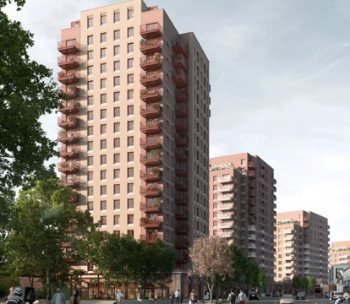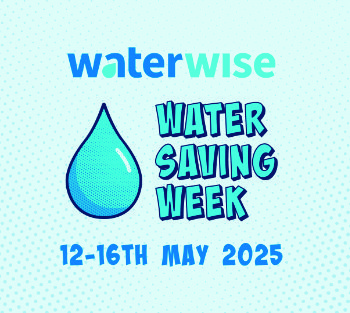Construction project
Contents |
[edit] What is a project?
A project is a series of related a tasks which when they are carried out in the correct order will lead to the completion of the project. Projects are temporary, generally resulting in the creation of a tangible product or outcome. This is as opposed to a programme, which is a series of interrelated projects that may be carried out repeatedly or continuously in order to support an ongoing process.
For more information, see Project v programme.
[edit] What is a construction project?
A construction project, sometimes just referred to as a ‘project’, is the organised process of constructing, renovating, refurbishing, retrofitting or adapting a building, or other built asset such as a tunnel or bridge.
For more information see: Construction works.
The project process typically starts with an overarching business requirement which is then developed through the creation of a brief, feasibility studies, option studies, design, financing and construction.
For more information see: Project stages.
Construction projects are typically one off's (particularly in the UK). That is, a project team, brief and financing are put together to produce a unique design that delivers a single project. Once the project is complete the team is disbanded and sometimes will not work together again. This can make it difficult to develop ideas or relationships, and so lessons learned are often not carried forward to the next project. The exceptions to this are repeat developers such as supermarket chains, housebuilders, and so on.
[edit] Who is involved in construction projects?
Typically, a construction project comprises many smaller projects which require a wide range of different disciplines working in collaboration. Large numbers of people are involved on a typical construction project, with the structure and composition of the project team usually changing through its duration. Projects may be coordinated by a project manager (or by a lead consultant) who is supported by professionals such as an architect, engineer, cost consultant and so on.
For more information, see Project team.
There will also be a range of suppliers, including contractors, sub-contractors, manufacturers and so on.
For more information see: Supply chain.
This separation of project roles into different disciplines, and contractual arrangements that further separate the client, consultants, contractors and subcontractors can make construction projects adversarial. This can result in conflict, opposition, confrontation, dispute and even hostility.
Solutions that have been put forward to combat the adversarial nature of construction projects include:
- Partnering and collaborative contracts such as NEC
- Alternative dispute resolution.
- Careful consideration of selection criteria.
- Integrated supply teams.
- Fair payment practices
- Other collaborative practices.
For more information, see Adversarial behaviour in the UK construction industry.
There will also be a number of third parties involved in construction projects, such as neighbours, local authorities, funders, insurers, unions, customers and so on.
For more information see: Third party dependencies and Stakeholders.
[edit] What permissions are required for construction projects?
A number of permissions are generally required for construction projects. These may be required before construction begins, during the construction works, and before the completed project is occupied. Examples include planning permission, building regulations approval, licensing and so on.
For more information see: Permissions and What approvals are needed before construction begins.
[edit] Public v private construction projects
Projects may be public, or private:
- A 'public project' is one that is financed by the government and is typically owned, and may be operated by the government. This can include major infrastructure works such as roads, bridges, dams, railways, tunnels, and so on, or public facilities such as hospitals, schools, prisons, libraries, leisure centres, and so on. For more information, see Public project definition.
- A ‘private project’ is one that is financed, controlled or commissioned by a private party, i.e. one that is not a government. Private parties can include individuals, corporations, charities, privately-funded institutions, schools, hospitals, and so on.
Some projects involve both public and private entities. Public Private Partnerships (PPPs) are a very broad range of partnerships in which the public and private sectors collaborate for some mutual benefit, which can include the completion of a construction project.
[edit] Related articles on Designing Buildings
Featured articles and news
Deputy editor of AT, Tim Fraser, discusses the newly formed society with its current chair, Chris Halligan MCIAT.
Barratt Lo-E passivhaus standard homes planned enmasse
With an initial 728 Lo-E homes across two sites and many more planned for the future.
Government urged to uphold Warm Homes commitment
ECA and industry bodies write to Government concerning its 13.2 billion Warm Homes manifesto commitment.
Places of Worship in Britain and Ireland, 1929-1990. Book review.
The emancipation of women in art.
CIOB Construction Manager of the Year 2025
Just one of the winners at the CIOB Awards 2025.
Call for independent National Grenfell oversight mechanism
MHCLG share findings of Building Safety Inquiry in letter to Secretary of State and Minister for Building Safety.
The Architectural Technology Awards
AT Awards now open for this the sixth decade of CIAT.
50th Golden anniversary ECA Edmundson awards
Deadline for submissions Friday 30 May 2025.
The benefits of precast, off-site foundation systems
Top ten benefits of this notable innovation.
Encouraging individuals to take action saving water at home, work, and in their communities.
Takes a community to support mental health and wellbeing
The why of becoming a Mental Health Instructor explained.
Mental health awareness week 13-18 May
The theme is communities, they can provide a sense of belonging, safety, support in hard times, and a sense purpose.
Mental health support on the rise but workers still struggling
CIOB Understanding Mental Health in the Built Environment 2025 shows.
Design and construction material libraries
Material, sample, product or detail libraries a key component of any architectural design practice.
Construction Products Reform Green Paper and Consultation
Still time to respond as consultation closes on 21 May 2025.
Resilient façade systems for smog reduction in Shanghai
A technical approach using computer simulation and analysis of solar radiation, wind patterns, and ventilation.

























Comments
[edit] To make a comment about this article, click 'Add a comment' above. Separate your comments from any existing comments by inserting a horizontal line.